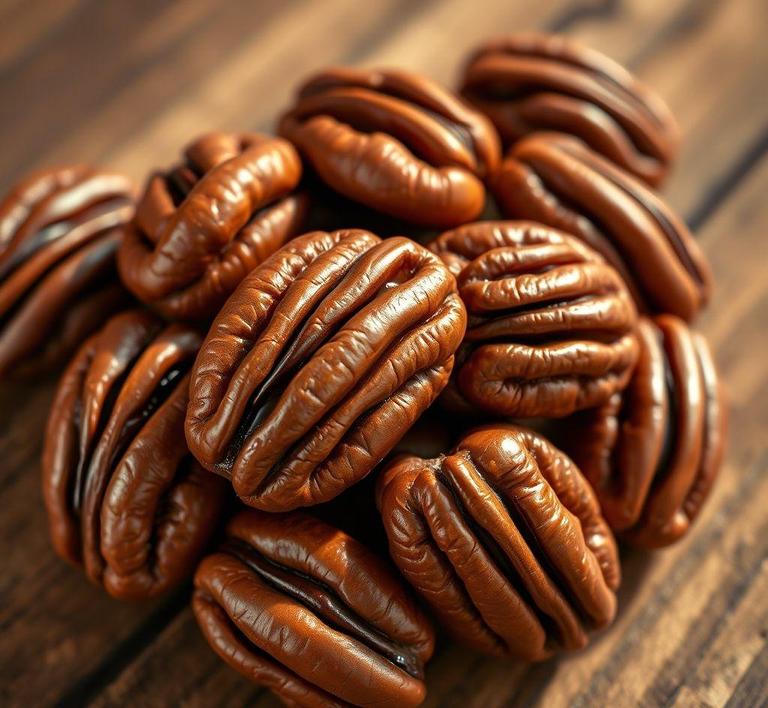If you’ve ever found yourself with a batch of pecans that you just couldn’t finish before they started losing their freshness, you might be wondering if it’s safe to refreeze them. The good news is, yes, you can refreeze pecans! However, there are some important tips and tricks to keep in mind to ensure they stay crunchy and flavorful. In this guide, we’ll walk you through the best practices for refreezing pecans, so you can enjoy their rich, nutty goodness anytime without worrying about waste or losing quality. So, let’s dive into the hows and whys of preserving your pecans for that perfect snack or recipe!
Can You Refreeze Pecans?

Pecans are a delicious and nutritious nut that many people enjoy snacking on, baking with, or adding to salads and dishes for an extra crunch. Whether you’re storing them in the pantry or freezing them to extend their shelf life, knowing how to handle them properly is important to preserve their flavor, texture, and nutritional value. When it comes to freezing and refreezing pecans, it’s natural to wonder: can you refreeze them without compromising their quality?
The short answer is yes, you can refreeze pecans, but there are some important things to consider. Freezing nuts, including pecans, is an excellent way to extend their shelf life and prevent them from going rancid, as they contain oils that can spoil over time. However, like any food, freezing and then refreezing can cause some changes to their texture and flavor. The key to maintaining their quality lies in how you handle them before and during the freezing process.
How To Refreeze Pecans?
If you have a batch of pecans that you’ve previously frozen and are now wondering if it’s safe or effective to refreeze them, it’s essential to follow specific steps to ensure the best outcome. Here’s how you can refreeze pecans properly:
- Check for Signs of Spoilage: Before refreezing pecans, ensure they haven’t been exposed to air or moisture for too long. If they’ve been thawed and sitting at room temperature for more than a couple of hours, or if they show signs of mold or off smells, they should not be refrozen. Rancidity is also a red flag; if the pecans smell sour or “off”, it’s best to discard them.
- Dry Them Properly: Moisture is one of the biggest threats to the quality of frozen food, and this is no different with pecans. If your pecans have been thawed and exposed to humidity or moisture, ensure they are completely dry before refreezing. Lay them out on a paper towel or clean cloth and let them air dry for a few hours, ensuring that any residual moisture evaporates.
- Use an Airtight Container or Freezer Bag: Proper packaging is crucial for maintaining the integrity of your pecans during freezing and refreezing. The best option is to store your pecans in a vacuum-sealed bag or a resealable freezer bag. Be sure to squeeze out as much air as possible to prevent freezer burn, which can degrade their flavor and texture. Alternatively, you can use a plastic container with a tight-fitting lid to keep moisture and air out.
- Freeze in Portions: If you’re unsure of how much you’ll use at once, it’s a good idea to freeze your pecans in smaller portions. This allows you to take out only what you need and avoids the need to thaw and refreeze the entire batch, which can cause more damage to the quality of the nuts. You can divide them into small plastic bags or airtight containers and label them with the date to keep track.
- Keep Track of Time: Pecans can be safely stored in the freezer for about 6 to 12 months. After that, the quality will start to degrade. While refreezing them once may not harm them significantly, repeatedly freezing and thawing can cause them to lose their fresh, crisp texture and flavor. Therefore, try to limit the number of times you refreeze them.
Quality Impact
Refreezing pecans can impact their quality, though the degree of change depends on how they’re handled. Here are the key factors to keep in mind when it comes to quality:
- Texture: When pecans are frozen, they retain their natural crunch and firmness. However, after thawing and refreezing, they can lose some of that crispness. The texture might become a little more chewy or rubbery, particularly if they were exposed to moisture during the thawing process. While this won’t necessarily make them unsafe to eat, it might affect their appeal for snacking or baking, where the crunch factor is important.
- Flavor: Pecans are rich in oils, and when frozen, those oils are preserved. However, the process of freezing and refreezing can cause these oils to become rancid more quickly, especially if the nuts were exposed to oxygen during the thawing process. Rancid pecans will have a bitter, unpleasant flavor. The longer they sit in the freezer, the more likely it is that their flavor will diminish. Refreezing can exacerbate this, as repeated freezing cycles may alter the delicate balance of flavors, resulting in a less pleasant taste.
- Moisture and Freezer Burn: If the pecans were not stored in an airtight container or bag, they could be susceptible to freezer burn. This happens when moisture evaporates from the nuts and causes them to dry out. Freezer burn can lead to a loss of flavor, and in some cases, it can make the texture of the nuts unpleasant. Pecans that have been refrozen multiple times are especially prone to this issue, as the moisture content will fluctuate each time they’re thawed and frozen again.
- Nutritional Value: Freezing and refreezing pecans doesn’t significantly affect their nutritional content in the short term. They will retain their high levels of healthy fats, protein, vitamins, and minerals, but if they’ve been exposed to temperature fluctuations or moisture, their quality may diminish. While refreezing pecans doesn’t destroy their nutritional value outright, it may affect their freshness, which could make them less enjoyable to eat.
refreezing pecans is possible, but it’s not always the best option if you want to maintain their original quality. Pecans are delicate nuts that can lose their crunch, flavor, and overall texture if they are frozen and thawed multiple times. If you do need to refreeze them, make sure to dry them properly, store them in an airtight container, and try to limit the number of times they are exposed to thawing and freezing cycles.
While refreezing doesn’t significantly affect the nutritional value of pecans, it can lead to a less satisfying eating experience. To maximize the shelf life and quality of pecans, it’s best to freeze them properly the first time, use them within 6-12 months, and avoid frequent cycles of thawing and refreezing. When in doubt, using freshly frozen pecans is always the safest bet for optimal taste and texture.
Is It Safe To Refreeze Pecans?
Pecans, like many other nuts, are a delicate commodity when it comes to freezing and refreezing. The safety of refreezing pecans largely depends on how they were initially stored and how they were thawed. In essence, while refreezing pecans is possible, it does require careful attention to both the temperature and the handling process.
Nuts, including pecans, have a high fat content, which makes them prone to spoilage and freezer burn when improperly stored. When you freeze pecans, the freezing process effectively slows down the rate of oxidation, keeping them fresh for a longer period. However, refreezing pecans can complicate matters. Each cycle of freezing and thawing opens the door for potential moisture buildup, which can degrade the texture and flavor of the pecans. If pecans were originally frozen at peak freshness and have only been thawed once (and not left at room temperature for too long), then refreezing them is generally safe. However, this comes with a few caveats, which we will explore in the following sections.
Signs That Pecans Should Not Be Refrozen
Before considering whether or not to refreeze pecans, it’s important to check for specific signs of degradation. Here are some key indicators that your pecans should not be refrozen:
- Change in Texture: If the pecans feel overly soft or have a mushy texture when thawed, they may have begun to lose their structural integrity. Freezing and thawing repeatedly can break down the cell walls of the nuts, leading to an undesirable consistency. Mushy pecans can also be more susceptible to spoilage.
- Off or Rancid Smell: Pecans, being high in fat, are particularly prone to rancidity. If your pecans give off a sour, bitter, or stale odor after being thawed, it’s a sign that they’ve begun to spoil. Rancid nuts not only lose their flavor but can also cause digestive issues if consumed.
- Freezer Burn: Freezer burn occurs when food is exposed to air in the freezer, causing dehydration and oxidation. Pecans affected by freezer burn will have a dried, discolored, and shriveled appearance, often with a tough or leathery texture. These are signs that the pecans are no longer in optimal condition and should not be refrozen.
- Moisture or Ice Crystals: If you see ice crystals or excess moisture on the surface of the pecans after thawing, this suggests that they were not stored properly and have been exposed to fluctuating temperatures. Refreezing nuts that have absorbed moisture can lead to a soggy texture and compromised flavor.
- Presence of Mold: Any signs of mold, discoloration, or unusual growth on your pecans should be an immediate red flag. Mold can develop when nuts are not stored in an airtight container or are exposed to humidity. Moldy pecans should not be consumed and must be discarded immediately.
Common Refreezing Mistakes
Refreezing pecans might seem like an easy way to preserve them, but there are common mistakes people make that can lead to less-than-ideal results. Here are some of the most frequent missteps:
- Not Allowing Pecans to Fully Cool Before Freezing: One of the key errors is refreezing pecans while they are still warm or even at room temperature. Freezing warm pecans can lead to moisture buildup, which can affect both the texture and flavor. Always let the nuts cool completely before freezing them to prevent condensation from forming inside the storage container.
- Improper Storage Containers: Another mistake is not using airtight containers or vacuum-sealed bags when freezing pecans. Exposure to air is the enemy of nuts in the freezer. If you use a container that allows air to seep in, the pecans will develop freezer burn much more quickly. The right storage container is essential for maintaining the quality of the nuts through multiple freezing and thawing cycles.
- Frequent Opening of the Freezer: Constantly opening the freezer can lead to temperature fluctuations, which are detrimental to frozen foods. If your freezer doesn’t maintain a consistent temperature, thawing and refreezing can result in a loss of quality. Only open the freezer when necessary to avoid this problem.
- Refreezing Thawed Pecans Multiple Times: Each cycle of thawing and refreezing increases the risk of moisture accumulation and degradation of texture. The more times you freeze and thaw pecans, the more likely they are to become stale, soft, or even rancid. Refreeze only if absolutely necessary, and limit the number of times you do it.
- Thawing at Room Temperature: Thawing pecans at room temperature before refreezing can cause them to absorb moisture from the air. This increases the chance of microbial growth, which can lead to spoilage. Always thaw pecans in the refrigerator or a cool, dry place to prevent this issue.
Tips And Tricks
To ensure that your pecans retain their flavor and texture even after being frozen and refrozen, here are some tips and tricks that will help you preserve their quality:
- Vacuum Seal: To keep the pecans fresh and safe from freezer burn, use a vacuum-sealed bag to store them. Vacuum sealing removes air, which is the primary cause of freezer burn. This method also prevents the pecans from absorbing any unpleasant odors from other frozen foods.
- Portion Control: If you don’t plan to use the entire batch of pecans at once, consider dividing them into smaller portions. This will prevent you from having to thaw and refreeze the entire batch, which reduces the risk of compromising the quality of the nuts. Only thaw the portion you intend to use.
- Label and Date: Always label your bags or containers with the date of freezing. This helps you track how long the pecans have been stored, as the longer they are in the freezer, the more likely they are to lose their flavor and texture. Aim to consume frozen pecans within 6-12 months for the best quality.
- Freezing Raw vs. Roasted Pecans: If you plan to freeze pecans, consider whether they are raw or roasted. Raw pecans generally freeze better and retain their quality better than roasted ones, as the oils in roasted nuts can become rancid more quickly. If you need to freeze roasted pecans, store them with care and limit the time they spend frozen.
- Use in Recipes: If your pecans have lost some of their crispness due to thawing or refreezing, consider using them in recipes where texture isn’t as important. Ground pecans or chopped pieces can still work perfectly in baking, smoothies, or salads, even if they aren’t as crunchy as fresh ones.
- Freeze Fresh: The best way to preserve pecans is to freeze them when they’re at their freshest. If you buy pecans in bulk, freezing them as soon as possible will prevent the nuts from going bad and extend their shelf life. Ensure they are stored properly to prevent air or moisture from getting to them.
Conclusion
Refreezing pecans is possible but should be done with caution. The key to safely refreezing pecans is to ensure they are properly stored, thawed, and handled. Always check for signs of spoilage before deciding whether to refreeze, and avoid common mistakes such as not using airtight containers or refreezing thawed pecans multiple times. By following best practices, you can maintain the quality and flavor of your pecans even after they’ve been frozen and thawed. However, keep in mind that repeated freezing and thawing can negatively affect texture and flavor, so whenever possible, it’s best to minimize the number of times you subject your pecans to freezing cycles. If stored and handled with care, pecans can remain a delicious and nutritious snack, even after time spent in the freezer.


